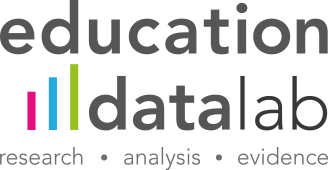This second briefing from the SMF’s Commission on Inequality in Education examines whether lower income communities are more likely to have access to less experience and qualified teachers.
The quality of teaching is the most important school-based determinant of educational success. Previous research shows pupils make less progress when they have a teacher that does not have a formal teaching qualification; is newly qualified; less experienced; without a degree in the relevant subject; and when teacher turnover at their school is high.
Our new analysis finds that schools serving lower income communities are more likely to have teachers with all these characteristics. This suggests they face greater recruitment difficulties in hiring staff and offers one explanation as to why there continue to be substantial and persistent inequalities in educational outcomes between pupils from disadvantaged and more privileged backgrounds.
SUMMARY
- The proportion of teachers who are not qualified in primary schools with the highest concentration of Free School Meals pupils is 4%, while in the most affluent quintile this is 2%. The gradient is similar for secondary schools where the richest have 5% unqualified teachers and the poorest have 9%.
- Schools with affluent intakes have 12% of teachers with more than ten years of experience while the poorest have just 7%. Among secondary schools the figures are 12% and 8% respectively. The schools with more advantaged intakes also have a higher proportion of teachers with between five and ten years of experience.
- These inequalities in experience are compounded by inequalities in expertise. Pupils in schools serving areas of higher deprivation are much more likely to have teachers without an academic degree in a relevant subject. The ‘expertise gap’ is 10 percentage points for Key Stage 4 Maths, 14 percentage points for Chemistry and a remarkable 22 percentage points for Physics.
- The schools serving more disadvantaged communities also experience higher levels of teacher turnover than neighbouring, more advantaged schools. The gradient is steepest at secondary level where a teacher in the highest deprivation quintile school is, other things being equal, 70% more likely to leave than one at a neighbouring school in the lower deprivation quintile. The odds of leaving the highest deprivation quintile school at primary level are 20% higher.
There are two policy options for reducing these inequalities: we must either persuade more experienced teachers to move to higher deprivation schools – the redistribution strategy; or we must support inexperienced teachers in these schools so that they are better able to succeed – the support strategy.
Re-distribution is not easy: inequalities in access to high quality teachers persist despite higher pay for equivalent experience in these schools. Though there may be a role for going further on pay, providing additional incentives for teachers to stay in disadvantaged schools. We also advocate greater emphasis on support to raise the retention rates of new teachers placed in more challenging teaching environments. While many new teachers start out with a strong sense of social mission, this can be undermined by the lack of support and mentoring.

